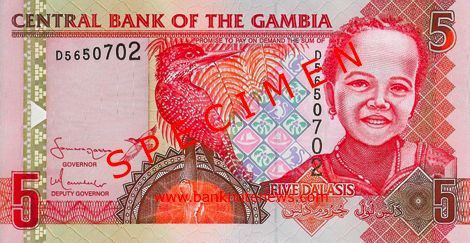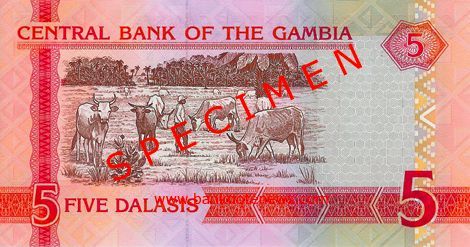Gambia issues new note series
14 07, 2006 11:01 Category: Africa



The following text is from a press release issued by the Central Bank of The Gambia on 14 July 2006:
“As part of continuing efforts to improve the security, durability and aesthetic quality of The Gambia’s banknotes, the Central Bank of The Gambia is pleased to announce the introduction of new design legal tender banknotes with effect from Thursday, 27 July 2006.
“According to international best practice, central banks introduce significant banknote design and security feature changes every six to eight years. This continuous cycle of design change enables central banks to be proactive in meeting threats from counterfeiters and maintaining public confidence in their currencies. The Gambia’s banknote design upgrade was postponed because of the scheduled implementation of monetary union in the West African Monetary Zone by July 2005 and the planned eventual introduction of a single currency for the Zone. However, in May 2005, the deadline for the launch of monetary union was rescheduled to December 2009. Since then, the Central Bank has been collaborating with its banknote printers, De La Rue Currency [www.delarue.com], to upgrade The Gambia’s banknotes.
“The Gambian currency has undergone a series of changes since it was introduced in 1971. These include reduction in size, use of more sophisticated inks and dyes, improved security features and printing techniques, and the introduction of higher denomination notes, the D50 and D100. The last major design change was done in 1996 when the portrait of the former Head of State [Sir Dawda Kairaba Jawara] was replaced with generic images.
“The new design banknotes will be similar to the current family of banknotes [Pick 20 - 24] to maintain continuity but will include improvements in the design, paper thickness and security features.
“The design of the banknotes would be modified to remove all the ‘white paper’ areas. The notes would be printed all over. This makes the notes less susceptible to accumulating dirt and would thus last longer. In addition, the box-like borders, especially on the back of the notes, have been removed to give the notes a more ‘open design’ look. The Gambia’s banknotes have contained these borders since 1971. This makes them look outdated. An ‘open design’ gives the banknotes a more modern look. The vignette on the back of the D10 banknote now features the Central Bank building.
“In addition to design changes, steps have also been taken to improve durability. The most important of these is to increase the paper thickness. In addition, the D5 and D10 would be coated with a special varnish after printing. This should extend the average circulation life of the banknotes. The security features of the D100 would also be upgraded by the inclusion of a silver foil on the front of the note with the image of 100 embossed into the foil. The Central Bank will continue to honour the existing banknotes at face value as long as they remain in circulation. The new family of banknotes will circulate side by side with the current existing banknotes. The current existing banknotes will continue to be legal tender until such a time as the stock is retired from circulation. As notes are returned to the Central Bank through the usual distribution channels, those in poor condition will be phased out of circulation. It is anticipated that this gradual phasing out will take several years to complete. A program of gradual introduction of the new design banknotes is considered the most cost-effective and practical means of undertaking this important exercise.”
Courtesy of Chris Twining.

